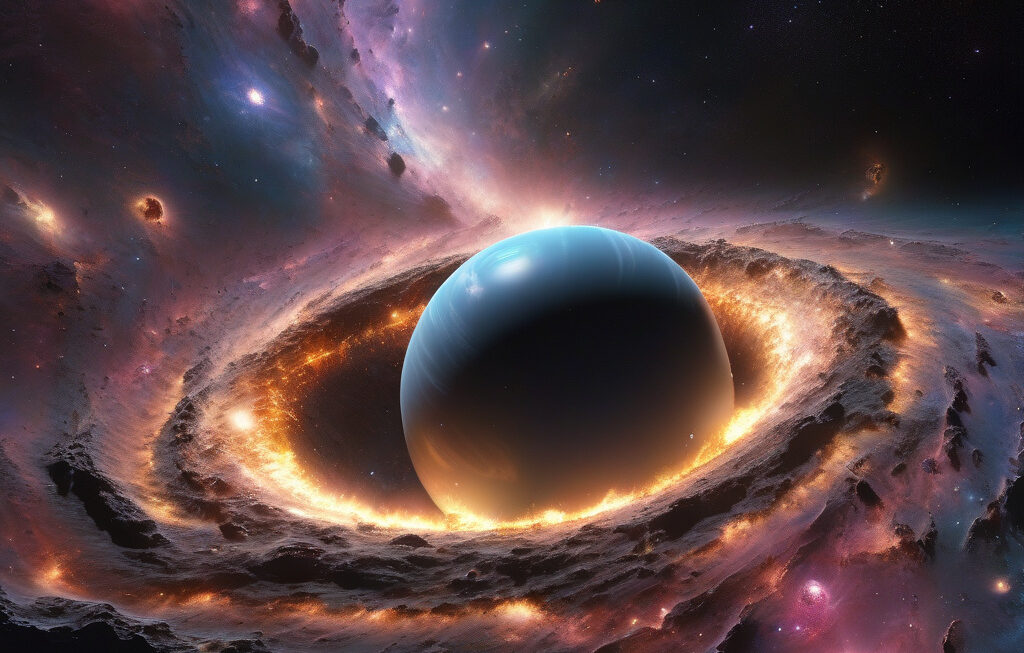New Physics on the Horizon: Ion Trap Experiment Targets ‘Fifth Force’ to Explain Dark Matter
In the realm of physics, the quest to unravel the mysteries of the universe never ceases. Scientists are constantly pushing the boundaries of our understanding, exploring new frontiers, and challenging established theories. One such frontier that has captured the attention of researchers is the search for a potential “fifth force” that could help explain the enigmatic nature of dark matter.
Recent advancements in experimental physics have led to the development of innovative techniques that allow scientists to probe the fundamental forces of nature with unprecedented precision. One such technique involves the use of “trapped ions” in highly controlled laboratory settings. These trapped ions serve as incredibly sensitive probes that can detect even the faintest signals of interactions between particles.
The concept of a fifth force stems from the realization that the four known fundamental forces – gravity, electromagnetism, the weak nuclear force, and the strong nuclear force – may not be sufficient to account for all the phenomena observed in the universe. Dark matter, which makes up roughly 27% of the universe’s mass-energy content, remains one of the most perplexing puzzles in modern physics. Despite decades of research, its elusive nature continues to evade direct detection.
By harnessing the unique properties of trapped ions, scientists are hoping to shed light on this mystery. These ions, which are electrically charged atoms held in place by electromagnetic fields, can be manipulated and studied with extraordinary precision. In a recent experiment conducted by a team of researchers, trapped ions were used to test for potential deviations from the predictions of the standard model of particle physics.
The results of the experiment revealed intriguing anomalies that could point towards the existence of a fifth force. If confirmed, this discovery would revolutionize our understanding of the fundamental interactions that govern the cosmos. It could provide crucial insights into the nature of dark matter and open up new avenues for exploration in theoretical physics.
What sets ion trap experiments apart is their ability to probe interactions at scales far beyond what is accessible through conventional particle accelerators. By isolating individual ions and subjecting them to controlled conditions, scientists can observe subtle effects that would otherwise be obscured by the complexities of larger systems.
The implications of a potential fifth force extend far beyond the realm of theoretical physics. Practical applications in areas such as quantum computing, precision measurement, and advanced materials could arise from a deeper understanding of these fundamental forces. The ability to manipulate and control interactions at the quantum level holds immense promise for technological innovation.
As the quest for the fifth force continues, researchers are optimistic about the prospects of uncovering new physics that could revolutionize our understanding of the universe. The marriage of cutting-edge experimental techniques with theoretical insights promises to yield groundbreaking discoveries in the years to come. The journey towards unlocking the secrets of dark matter and the fundamental forces of nature is as exciting as it is challenging.
In conclusion, the ion trap experiment targeting the elusive fifth force represents a bold step towards unraveling the mysteries of the cosmos. Through innovative techniques and rigorous experimentation, scientists are poised to make unprecedented breakthroughs that could reshape our understanding of the universe. The quest for new physics is a testament to human curiosity and the relentless pursuit of knowledge.
physics, ion trap, fifth force, dark matter, experimental research












